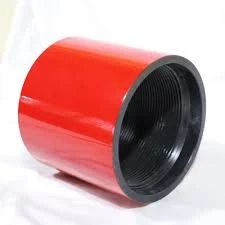- Afrikaans
- Albanian
- Amharic
- Arabic
- Armenian
- Azerbaijani
- Basque
- Belarusian
- Bengali
- Bosnian
- Bulgarian
- Catalan
- Cebuano
- Corsican
- Croatian
- Czech
- Danish
- Dutch
- English
- Esperanto
- Estonian
- Finnish
- French
- Frisian
- Galician
- Georgian
- German
- Greek
- Gujarati
- Haitian Creole
- hausa
- hawaiian
- Hebrew
- Hindi
- Miao
- Hungarian
- Icelandic
- igbo
- Indonesian
- irish
- Italian
- Japanese
- Javanese
- Kannada
- kazakh
- Khmer
- Rwandese
- Korean
- Kurdish
- Kyrgyz
- Lao
- Latin
- Latvian
- Lithuanian
- Luxembourgish
- Macedonian
- Malgashi
- Malay
- Malayalam
- Maltese
- Maori
- Marathi
- Mongolian
- Myanmar
- Nepali
- Norwegian
- Norwegian
- Occitan
- Pashto
- Persian
- Polish
- Portuguese
- Punjabi
- Romanian
- Russian
- Samoan
- Scottish Gaelic
- Serbian
- Sesotho
- Shona
- Sindhi
- Sinhala
- Slovak
- Slovenian
- Somali
- Spanish
- Sundanese
- Swahili
- Swedish
- Tagalog
- Tajik
- Tamil
- Tatar
- Telugu
- Thai
- Turkish
- Turkmen
- Ukrainian
- Urdu
- Uighur
- Uzbek
- Vietnamese
- Welsh
- Bantu
- Yiddish
- Yoruba
- Zulu
what is a pup joint
What is a Pup Joint?
In the world of oil and gas exploration, drilling operations play a crucial role in accessing valuable resources beneath the Earth's surface. Among the various components utilized in drilling, the pup joint is a significant element, often underestimated in its importance. Understanding what a pup joint is, its purpose, and its functions can provide greater insights into the complexities of drilling operations.
What is a Pup Joint?
The primary function of a pup joint is to adjust the length of the drill string, which is the assembly of drill pipes that connects the surface drilling rig to the drill bit at the bottom of the well. During drilling operations, various factors may require adjustments to the length of the drill string. For instance, when drilling through different geological formations, operators may need to add or remove sections of the drill string to maintain optimal drilling efficiency and performance. This is where pup joints come into play, providing a flexible means to achieve the desired length without the need for custom-cut lengths or extensive modifications.
what is a pup joint

Pup joints are particularly valuable in instances where precision is paramount. For example, if a drilling operation requires a specific drilling depth, the addition of one or more pup joints can allow for fine adjustments, thereby enhancing accuracy and efficiency. Moreover, these joints can also be used to facilitate the connection of various tools and equipment, aiding in the functionality of the drilling operation.
Material-wise, pup joints are usually constructed from high-strength steel to withstand the extreme pressures and harsh conditions encountered during drilling. They are also designed to possess high tensile strength, making them durable and capable of operating under challenging environments. The ends of pup joints are typically threaded, enabling them to connect seamlessly with other sections of drill pipe.
Additionally, pup joints can be vital in safety considerations. By enabling the precise control of the drill string length, these joints help minimize potential issues such as wellbore instability or drilling inefficiencies that could lead to accidents or equipment failures. Properly utilizing pup joints can extend the life of both the drilling apparatus and the drill bit, ultimately contributing to safer and more effective drilling operations.
In conclusion, while often overlooked, the pup joint serves a crucial role in the oil and gas drilling industry. Its ability to provide flexibility, precision, and safety enhances overall drilling efficiency. Understanding the pup joint and its functions underscores the importance of every component in the intricate process of resource extraction, reminding us that even the smallest parts play a pivotal role in achieving successful outcomes in the energy sector.
-
Well Casing Extension Couplings – Applications and InstallationNewsJun.06,2025
-
Types of Crossover Subs in Drilling & CompletionNewsJun.06,2025
-
Key Features of High-Quality Tubing Pup JointsNewsJun.06,2025
-
Installation and Maintenance Tips for Steel Couplings for PipeNewsJun.06,2025
-
How to Select the Right Pup Joint for Oil & Gas OperationsNewsJun.06,2025
-
Applications of Stainless Steel Pipe CouplingsNewsJun.06,2025







